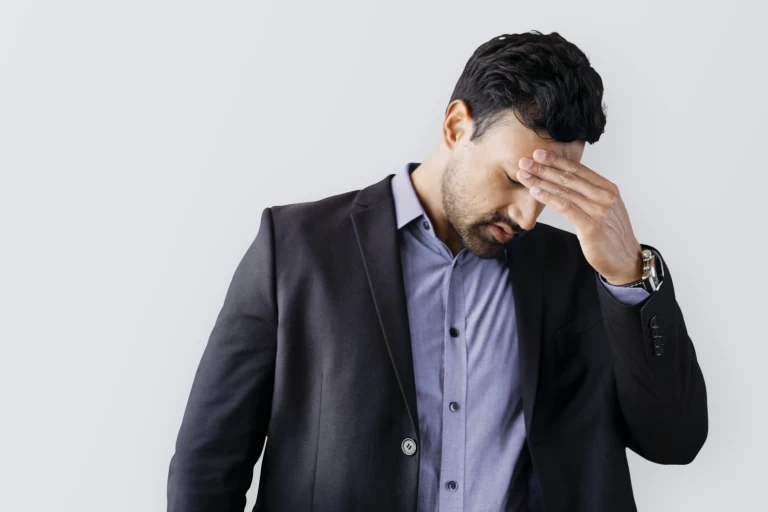
When a headache strikes, most of us reach for a glass of water, some quiet time, or a pain reliever. But what if the real cause of your pounding head isn’t in your head at all, but rather, in your back?
Millions of people suffer from both chronic back pain and recurring headaches or migraines. But few realize these two conditions may be connected.
By downloading the Digital Patient Chart mobile app you can better control your patient portal.
Research and clinical experience increasingly point to a fascinating and often overlooked link: your spine, especially the upper cervical spine, located at the top of your neck.
Understanding the Anatomy: Your Spine and Your Head Are Closely Connected
Your spine isn’t just a stack of bones — it’s the central support structure of your entire body and a crucial part of your nervous system. Within the spinal column lies the spinal cord, which acts as a communication highway between your brain and the rest of your body.
The upper cervical spine, made up of the first two vertebrae (the atlas and axis), plays a vital role in this system. It supports the skull, allows for a wide range of head movement, and — importantly — is located right at the brainstem, where crucial neurological processes take place.
When this area becomes misaligned — whether from poor posture, injury, or prolonged stress — it can place pressure on nerves, restrict blood flow, and interfere with the body’s natural communication processes. This can manifest not only as neck and back pain, but also as headaches or migraines.
How Back Pain Can Trigger Headaches
There are several ways spinal dysfunctions, especially in the neck and upper back, can lead to headaches:
1. Nerve Irritation
Misalignments in the upper spine can irritate or compress nearby nerves, especially the greater occipital nerve, which travels from the upper neck to the scalp. This irritation can cause tension-type headaches or cervicogenic headaches — headaches that originate from the neck but are felt in the head.
2. Muscle Tension and Referral Pain
Back pain often causes surrounding muscles to compensate or overwork, leading to muscle tightness in the neck and shoulders. This tension can radiate upward, contributing to a band-like pain around the head or behind the eyes. Chronic muscle tension is also a known migraine trigger.
3. Postural Imbalances
Poor posture — like forward head carriage or slouching — alters the natural alignment of the spine. Over time, this misalignment can strain the cervical vertebrae and upper thoracic spine, leading to both localized pain and referred headache pain.
4. Impaired Blood Flow and CSF Flow
The upper cervical spine plays a key role in regulating blood and cerebrospinal fluid (CSF) flow between the brain and body. Misalignments can disrupt these processes, potentially triggering neurological symptoms, including migraines.
The Upper Cervical Connection: Why This Area Matters
The upper cervical spine is a unique region. Unlike other vertebrae, the atlas (C1) and axis (C2) lack intervertebral discs and have more mobility than stability. This makes them especially vulnerable to misalignment — even small shifts can have large consequences.
Upper cervical misalignments can:
- Irritate the trigeminal nerve, a major pain pathway involved in migraines.
- Disrupts vestibular function, contributing to dizziness and balance issues often seen with migraine.
- Affecting the autonomic nervous system balance, potentially increasing sympathetic (fight or flight) activity, a known migraine trigger.
This is why many patients who suffer from chronic headaches or migraines, especially those unresponsive to medication, turn to upper cervical chiropractic care for answers.
What Is Upper Cervical Chiropractic?
Upper cervical chiropractic is a specialized branch of chiropractic care that focuses on correcting misalignments in the top two bones of the neck: the atlas and axis.
Unlike traditional spinal adjustments, upper cervical techniques are:
- Precise: Doctors use digital imaging and advanced measurements to detect exact misalignments.
- Gentle: Corrections are made without twisting, cracking, or popping.
- Effective: Many patients report relief from migraines, headaches, neck pain, and other symptoms after just a few adjustments.
What Does the Research Say?
Several studies support the link between spinal dysfunction and headaches:
A 2015 study published in the Journal of Upper Cervical Chiropractic Research found that migraine sufferers who received upper cervical adjustments reported a significant decrease in both frequency and intensity of migraines.
A review published in Headache: The Journal of Head and Face Pain emphasized that cervicogenic (neck-originating) headaches are often misdiagnosed as migraines, leading to ineffective treatment.
Clinical observations show that correcting upper cervical misalignments can lead to long-term relief from both headaches and associated back or neck pain.
When to Suspect a Spinal Cause for Your Headaches
You might consider an upper cervical evaluation if:
- Your headaches begin at the base of the skull or radiate from the neck.
- You also have chronic neck, shoulder, or upper back pain.
- You’ve experienced a head or neck injury (even years ago).
- Your posture is poor, or you spend long hours at a computer.
- Headache medications offer only temporary relief or none at all.
Remember: your body works as a whole, and often, pain in one area is a reflection of dysfunction somewhere else.
Discovering and correcting spinal imbalances, particularly in the upper cervical spine, may be the hidden key to unlocking lasting relief from headaches and reclaiming a life free from chronic pain.









Leave a comment